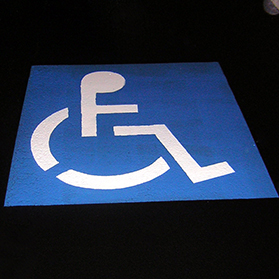5 Ways to Reduce Your Risk of Falling

Every year, one in three adults, age 65 and older, will suffer a fall. The risk of falling naturally goes up as people age; however, being on certain medications, having osteoporosis or being generally inactive – among others factors – can put you at a higher risk.
Stephanie Lambers M.ED, OTR/L, an injury prevention coordinator with TriHealth’s ThinkFirst Injury Prevention Program, explains how you can reduce your risk of falling.
#1: Have Your Doctor Review Your Current Medications
If you have multiple conditions and see several different specialists, make sure your primary care doctor knows what medications – both prescribed and over-the-counter – you are on. Some medications may increase your likeliness of falling.
On the other hand, when certain medications interact, it could cause symptoms, like dizziness, that put you at a higher risk for falling. Your doctor may suggest weaning you off a medication or two in order to prevent the potential negative side effects of those interactions.
It’s also important to keep a running list of questions you have about your medications, like side effects, so you’re prepared for your next doctor’s appointment.
#2: Be Candid with Your Doctor
Stephanie says sometimes people are concerned about seeking medical help because they’re worried a doctor or nurse may suggest remedies that interfere with their independence. “They want you to be able to remain in the community as much as you can,” Stephanie explains. “You need to be honest with your physician so your physician can refer whatever help you’d need – whether it’s therapy or getting involved in an exercise program.”
#3: Get Your Vision Checked
As we age, we can have changes in our vision, so it’s important to stay on top of your eye care appointments, in case you need to change your prescription or even adjust the way your glasses fit. “Sometimes it’s even as simple as cleaning the glasses,” Stephanie laughs.
#4: Have a Home Evaluation
Your healthcare provider can recommend a trained professional who can come to your home and assess it room-by-room to see what sort of potential hazards you may have. For example, you may need to have a grab bar installed in your bathroom or you may need to rearrange furniture or remove clutter you might trip over.
“I think an important thing with the bedroom, as well as the bathroom, is to make sure there are motion-activated night lights – those types of things,” Stephanie points out. “When it’s darker, even though you’ve lived in that home for 40 years, it’s just one of those things where when you’re tired and have to get up in the middle of the night to find your way to the restroom, a night light is helpful.”
Other ways to make your home safer include:
- Placing bathmats with gripping surface underneath (microfiber mats with grip undersurface) versus regular bath rugs outside shower or tub
- Securing all rugs to the floor properly; not using throw rugs
- Making sure stairways are well lit and have at least one hand rail
- Installing at least one working telephone that is reachable from the floor
- Storing commonly used household items at safe reaching heights
#5: Embrace Universal Design
While re-positioning furniture or adding extra lightning can be very helpful in terms of fall prevention, Stephanie says if you’re on the market to build a home, consider universal design. Through making doors wider and using less steps, for example, universal design makes homes safer and more convenient for everyone.